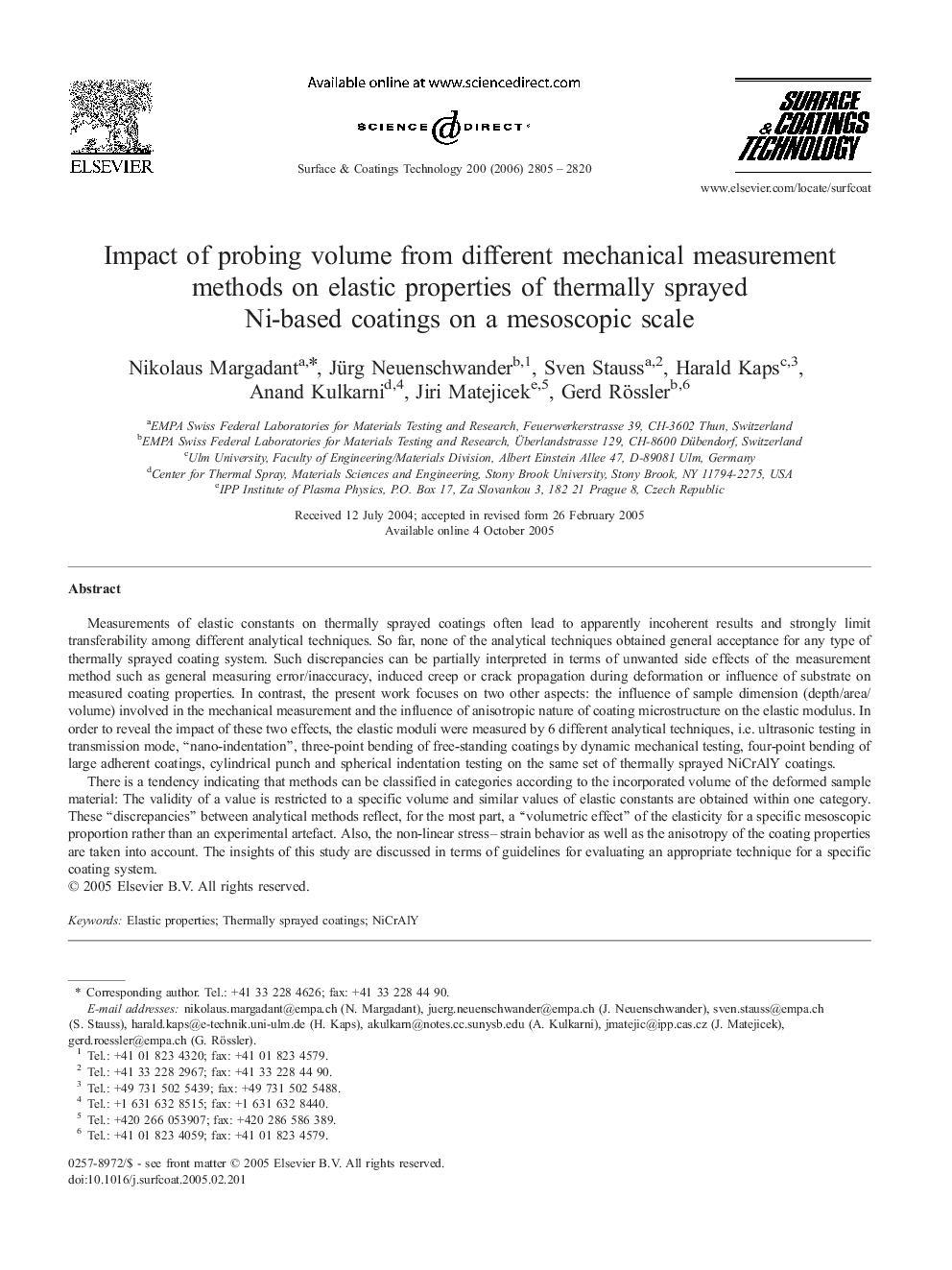| Article ID | Journal | Published Year | Pages | File Type |
|---|---|---|---|---|
| 1662875 | Surface and Coatings Technology | 2006 | 16 Pages |
Measurements of elastic constants on thermally sprayed coatings often lead to apparently incoherent results and strongly limit transferability among different analytical techniques. So far, none of the analytical techniques obtained general acceptance for any type of thermally sprayed coating system. Such discrepancies can be partially interpreted in terms of unwanted side effects of the measurement method such as general measuring error/inaccuracy, induced creep or crack propagation during deformation or influence of substrate on measured coating properties. In contrast, the present work focuses on two other aspects: the influence of sample dimension (depth/area/volume) involved in the mechanical measurement and the influence of anisotropic nature of coating microstructure on the elastic modulus. In order to reveal the impact of these two effects, the elastic moduli were measured by 6 different analytical techniques, i.e. ultrasonic testing in transmission mode, “nano-indentation”, three-point bending of free-standing coatings by dynamic mechanical testing, four-point bending of large adherent coatings, cylindrical punch and spherical indentation testing on the same set of thermally sprayed NiCrAlY coatings.There is a tendency indicating that methods can be classified in categories according to the incorporated volume of the deformed sample material: The validity of a value is restricted to a specific volume and similar values of elastic constants are obtained within one category. These “discrepancies” between analytical methods reflect, for the most part, a “volumetric effect” of the elasticity for a specific mesoscopic proportion rather than an experimental artefact. Also, the non-linear stress–strain behavior as well as the anisotropy of the coating properties are taken into account. The insights of this study are discussed in terms of guidelines for evaluating an appropriate technique for a specific coating system.
